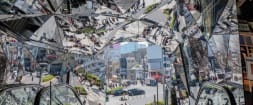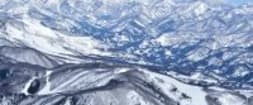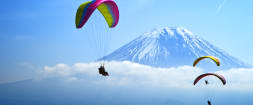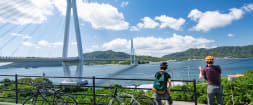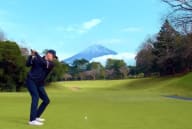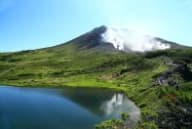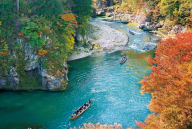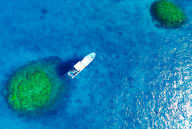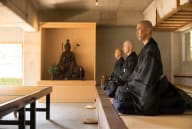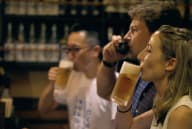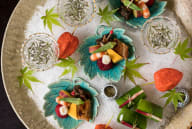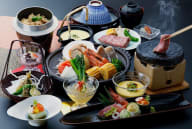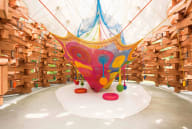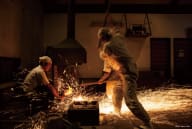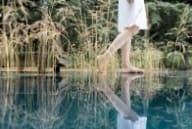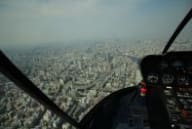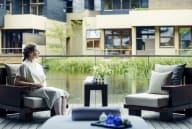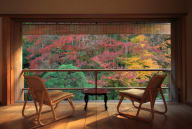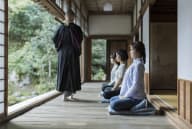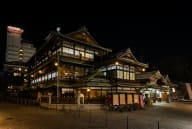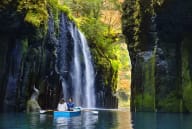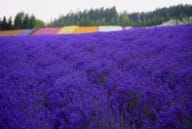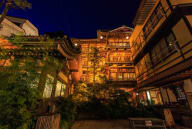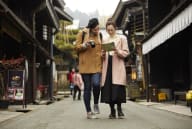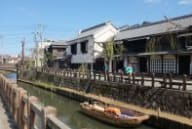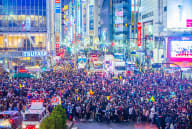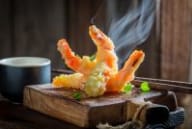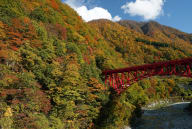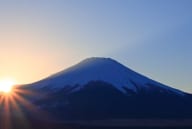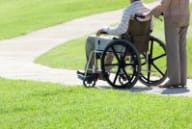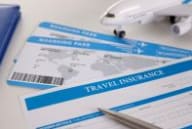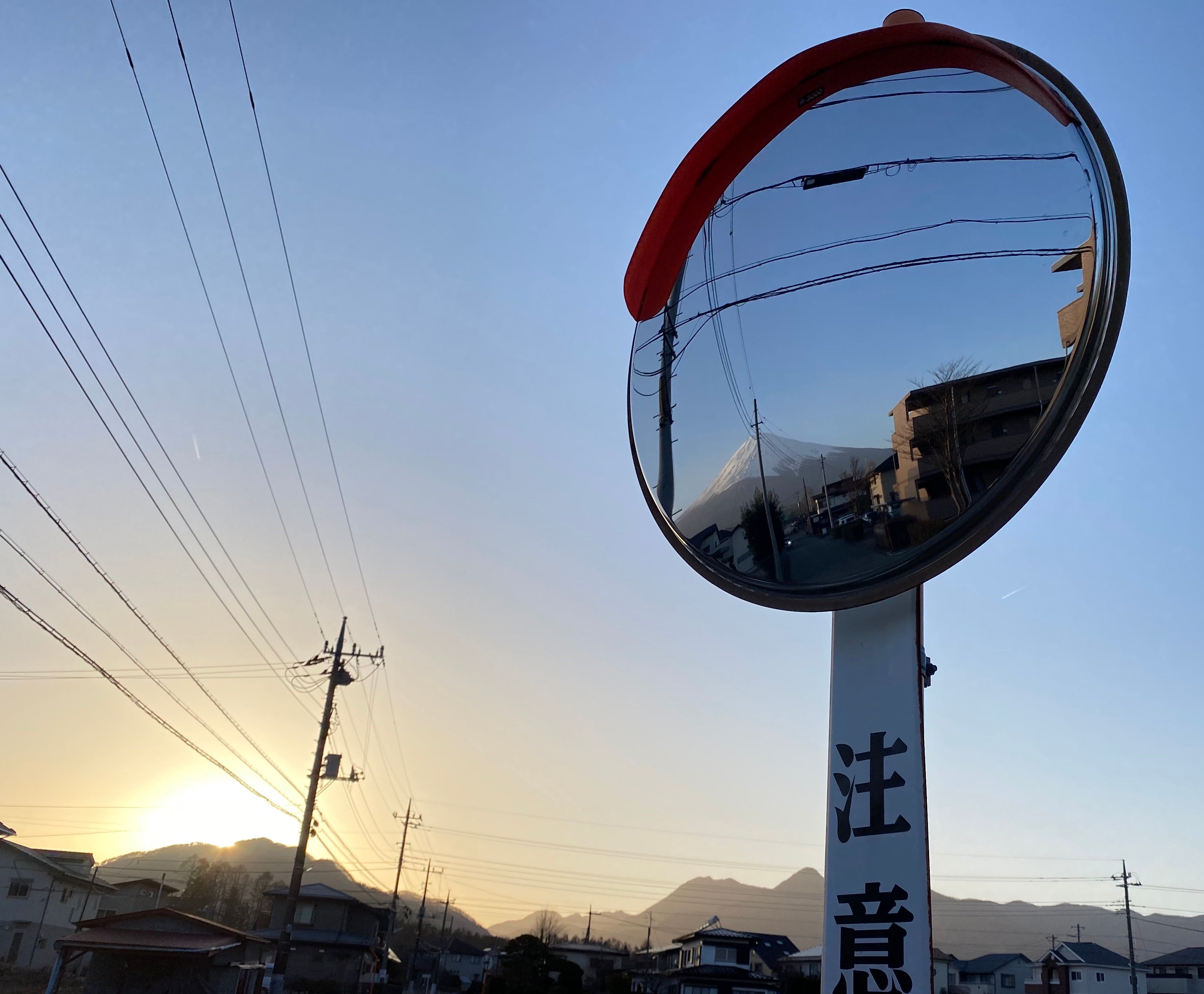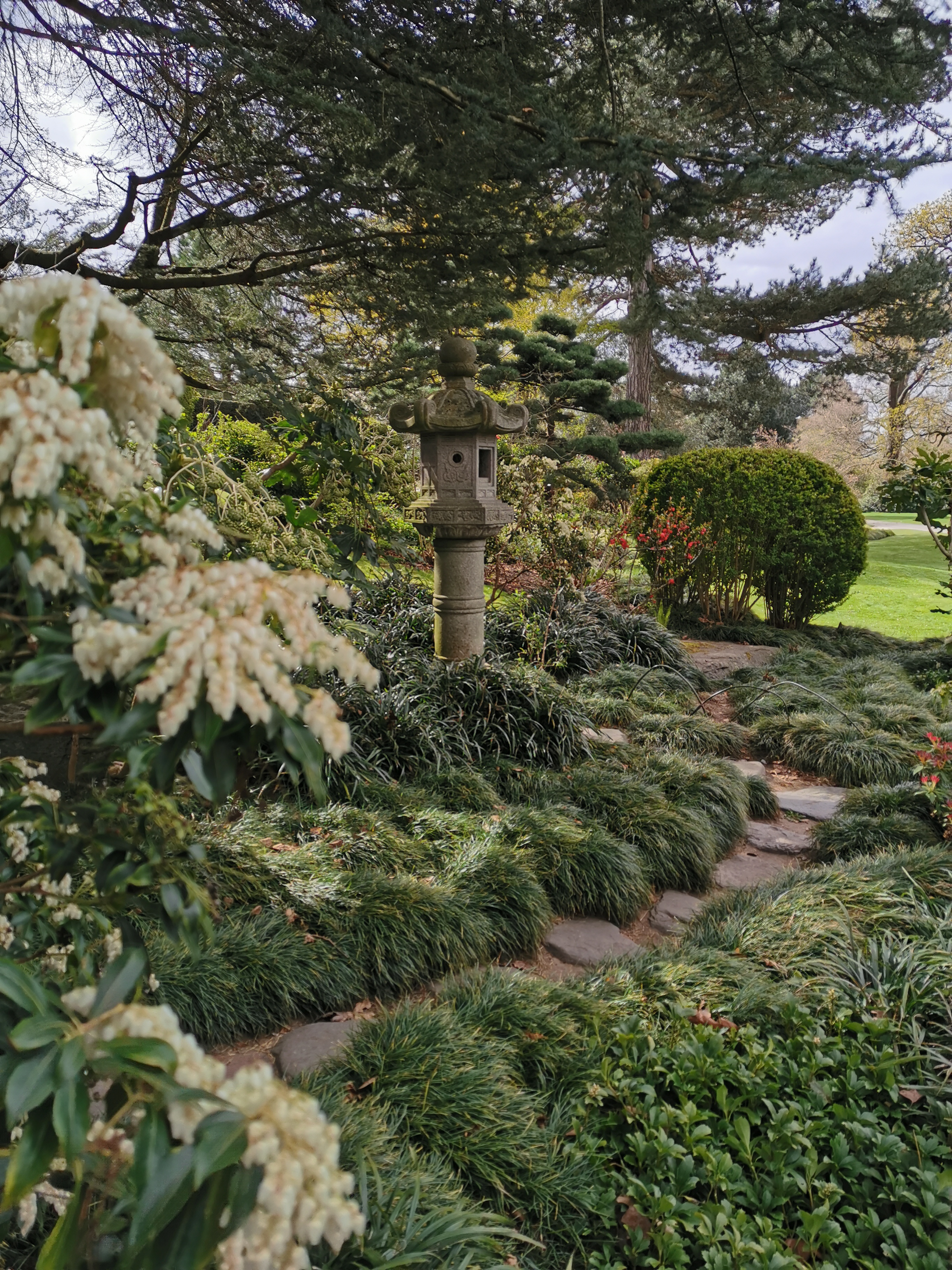
Ukiyo-e, also known as ‘pictures of the floating world’, are a style of woodblock prints in Japan, commonly depicting scenes such as landscapes, people, flora, fauna, and more. Created using a complex method of carving wood, applying ink to a newly formed ‘keyblock’, and then impressing paper upon the block, woodblock prints are an especially famous craft originating from Japan. You may have seen woodblock prints around the world in various museums, especially Katsushika Hokusai’s ‘The Great Wave Off Kanagawa.’ Hokusai is known as one of the most popular ukiyo-e artists of the Edo Period, but today we focus on Utagawa Hiroshige, born in 1797, and most famous for his various depictions of the Japanese countryside and cities. His journeys and prints of the 53 Stations of the Tokaido Road between Tokyo (known as Edo during the Edo Period) and Kyoto are some of the most recognisable prints in the world. In this article, we’ll explore some of the locations that Hiroshige printed, ranging all the way from Tokyo to Shikoku.
Nihonbashi

One of Hiroshige’s most famous series is known as ‘The Fifty-Three Stations of the Tokaido’. The Tokaido route, which led people to and from Kyoto and Edo, was made up of 53 different ‘stations’, where travellers could rest on their journeys between the cities. Beginning at Nihonbashi in Tokyo, the road weaved its way alongside the southern coast of Honshu, Japan’s main island, before turning inland bound for Kyoto. Some of the stations still remain in Japan, and have markers to let visitors know the history of the location. You can stand near Nihonbashi and imagine the preparation and time it would take to make the nearly 500 kilometre journey to Kyoto. Current day Nihonbashi is right in central Tokyo, near Tokyo Station and the Imperial Palace. With its prime location, it is a great spot to drop by if you are in the Tokyo area.
Alongside depicting the Tokaido route, Hiroshige created both woodblock prints and ink paintings of many other locations within Japan. The landscapes of Japan have changed quite a bit since Hiroshige originally created his many masterpieces, but seeing his depictions and then having the opportunity to explore the same locations is a wonderful feeling!
Enoshima



You’ll notice that many of the locations depicted within Japan are in various 'provinces' around the country. Before the creation of prefectures, there were a multitude of provinces that made up the Japanese islands. You may notice that Hiroshige’s depiction in this triptych is of a familiar sight, the island of Enoshima in modern day Kanagawa Prefecture. Enoshima is located rather close to Tokyo, with the temple filled Kamakura only walking distance away. In the background you can see Mt. Fuji, which also shows up in quite a few of Hiroshige and other ukiyoe artists’ prints. The deity Benzaiten is enshrined on the island, and nowadays you can visit Enoshima Shrine on the island, which is composed of three distinct spots. The iconic Sea Candle also rises nearly 60 metres into the area and gives great views of the surrounding areas. Visit the Samuel Cocking Garden, originally established by British merchant Samuel Cocking in the 19th century for a relaxing stroll as well. While part of the garden was destroyed in the 1923 Great Kanto Earthquake, it has undergone restorations, and features a wide variety of beautiful flora.
Mt. Kano

A great example of some of the ink paintings from Hiroshige is in his ‘A Landscape of Mt. Kano in Kazusa Province.’ Kazusa Province was in present day Chiba Prefecture, and Mt. Kano is part of what is known as the Three Mountains of Boso. Located on the Boso Peninsula, Mt. Kano is quite accessible from Tokyo and can give great views of the surrounding Tokyo area. The Kujukutani Valley will sometimes fill with mist, creating a wonderfully mystic view. Hiroshige also made another print on the east facing coast of Kazusa Province, namely of Kujukuri Beach, Chiba Prefecture's longest beach.
Naruto

An iconic location off the coast of Tokushima Prefecture is another scene depicted by Hiroshige. In the Naruto area you can find the Naruto Strait, where waters from the Seto Inland Sea and Kii Strait combine into famous whirlpools. The depiction from Hiroshige shows the intensity of the whirlpools that are created, some up to 20 metres in diameter. You can view these whirlpools from either boats that sail the strait, or by traversing the Onaruto Bridge between Shikoku Island and Awaji Island. This is a location where many of the original features of the Hiroshige print can still be seen, the whirlpools are still twisting and turning to this day!
Arashiyama and Cherry Trees
Hiroshige’s depictions of various flora around Japan are also beautiful. He created multiple views of flowers, trees, and the many animals and creatures that live amongst them. He showcased the famous Arashiyama area in Kyoto, most known for its bamboo forests and local temples to explore. Stroll alongside the Katsura River after crossing the Togetsukyo Bridge and enjoy the stunning scenery of Arashiyama and the surrounding hills and mountains. The Sagano Scenic Railway is also nearby, and runs through some stunning scenery. Depending on the season you visit, you’ll have the opportunity to see cherry blossoms, autumn foliage, or even snow!

Hiroshige’s cherry blossoms are beautiful representations of the famous tree in Japan. All around the country during the springtime, the cherry trees all burst to life with bright pink blossoms, and depictions of them are commonly found in woodblock printing.

Suidobashi and Surugadai

Suido Bridge and Surugadai from 100 Famous Views of Edo, Utagawa Hiroshige, Collection of Alan Medaugh. Photo: © Alan Medaugh, photography by Matsuba Ryōko.
Heading back to the Tokyo area, the area of Surugadai contains Ochanomizu Station, and nearby Suidobashi also has an eponymous bridge over the Kanda River. Hiroshige’s print here shows a ‘koinobori’ rising into the sky, a traditional flying banner used to celebrate Children’s Day in early May. There are usually multiple different streamers used to represent different parts of the family. If you are in Japan during the Golden Week holidays, exploring and seeing the many decorations, especially for Children’s Day, is a great way to spend some time. Suidobashi and Surugadai are both relatively centrally located in Tokyo, north of the Imperial Palace and slightly to the west of the popular Akihabara area. The Tokyo Dome, famous for its sporting events, is also located slightly to the north of Suidobashi Station.
Mt. Fuji and Otodome Falls

Hiroshige’s depictions of nature are quite striking, with Mt. Fuji commonly showing up in many of his works. Waterfalls also make their presence known in Hiroshige prints, such as Otodome Falls in current day Shizuoka Prefecture. Still a view that you can see today, Otodome Falls cascades 25 metres down from the Shiba River, and you can even enjoy seeing Mt. Fuji at the same! Nearby Shiraito Falls is also a popular attraction, differing from Otodome Falls in that it is composed of multiple smaller streams, which create a beautiful veil of falling water.
Tonosawa Hot Spring in Hakone
You can’t forget hot springs in the world of woodblock prints, as they are also quite well represented within prints from a variety of artists. Hakone, located in Kanagawa Prefecture next to Tokyo, is a popular hot spring or ‘onsen’ resort in Japan. With a multitude of onsens available for people to visit, some even afford views of nearby Mt. Fuji. Many of Hakone’s onsens are also set alongside the Haya River, and you can access them through public transportation on the Hakone Tozan Line. Nearby is also Lake Ashi, where you can have great views of Mt. Fuji and the surrounding areas. Hakone was historically the 10th station of the Tokaido route, and you can visit the area that once was part of the famous road between Kyoto and Edo.

Hiroshige was a master of the ukiyoe print, creating iconic landscapes of Japan during the Edo Period. Some of the scenes that he depicted can still be seen to this day, and visiting the same areas that he travelled to hundreds of years ago is a wonderful experience; something to consider for any upcoming trip to Japan. With the amount of prints that Hiroshige created, there are so many areas that you can visit!
The British Museum is also currently running an exhibition on the many prints of Hiroshige, entitled ‘Hiroshige: artist of the open road’, with a wonderful collection of high quality prints of his various series, in addition to covering how Japanese prints influenced famous western artists such as Van Gogh and Henri de Toulouse-Lautrec, this exhibition is not to be missed. It is now open until 7 September. Use the code JNTO25 to get 25% off exhibition tickets!
T&Cs: Offer valid for visits until 24 August 2025 on pre-booked tickets from britishmuseum.com/hiroshige (subject to availability). Enter code online before selecting your ticket date.











